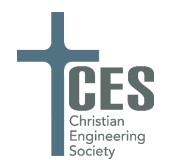Document Type
Paper
Abstract
Created in the image of God, humans have a unique purpose within creation. We are given the task of worshipping God (Isaiah 43:21), sharing the gospel of Jesus Christ (Matthew 28:18-20), discovering and developing the potentials of creation (Genesis 2:15), struggling and praying for shalom (Isaiah 1:17), and celebrating instances of God’s coming kingdom (Isaiah 9:1-7, Colossians 1:19-20). As Christian engineering educators, we have the additional task of preparing students to become capable engineers and to use those skills in response to God’s call in their lives. We have the blessing of not only teaching the technical aspects of engineering, but also of directing those skills towards shalom.
The shalom framework for education proposed by Nicholas Wolterstorff is an example of how to teach students to work towards restoration. Specifically, it suggests that educators should teach students to recognize injustice, pray for and struggle for shalom, and celebrate glimpses of it on earth. Wolterstorff describes shalom as finding delight in right relationships between God, other humans, the non-human creation, and oneself. He adds that while we will not see the fulfillment of shalom in our lives, we are nonetheless called to pray and work towards it until God finishes the task.
This paper provides the biblical bases for working, teaching, and engineering for shalom. It provides a summary of the shalom framework for education as presented by Wolterstorff as well as other engineers and scholars. Finally, it includes practical examples for how to incorporate this framework into the engineering curriculum.
Creative Commons License

This work is licensed under a Creative Commons Attribution-Noncommercial-No Derivative Works 4.0 License.
Copyright
© 2024 Julie Wildschut. All rights reserved.
Educating for Shalom in Engineering
Created in the image of God, humans have a unique purpose within creation. We are given the task of worshipping God (Isaiah 43:21), sharing the gospel of Jesus Christ (Matthew 28:18-20), discovering and developing the potentials of creation (Genesis 2:15), struggling and praying for shalom (Isaiah 1:17), and celebrating instances of God’s coming kingdom (Isaiah 9:1-7, Colossians 1:19-20). As Christian engineering educators, we have the additional task of preparing students to become capable engineers and to use those skills in response to God’s call in their lives. We have the blessing of not only teaching the technical aspects of engineering, but also of directing those skills towards shalom.
The shalom framework for education proposed by Nicholas Wolterstorff is an example of how to teach students to work towards restoration. Specifically, it suggests that educators should teach students to recognize injustice, pray for and struggle for shalom, and celebrate glimpses of it on earth. Wolterstorff describes shalom as finding delight in right relationships between God, other humans, the non-human creation, and oneself. He adds that while we will not see the fulfillment of shalom in our lives, we are nonetheless called to pray and work towards it until God finishes the task.
This paper provides the biblical bases for working, teaching, and engineering for shalom. It provides a summary of the shalom framework for education as presented by Wolterstorff as well as other engineers and scholars. Finally, it includes practical examples for how to incorporate this framework into the engineering curriculum.

